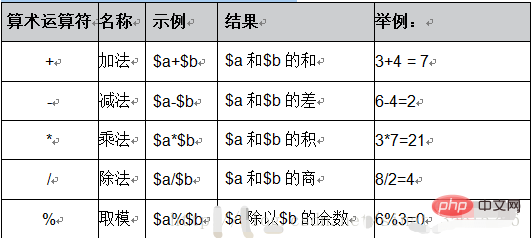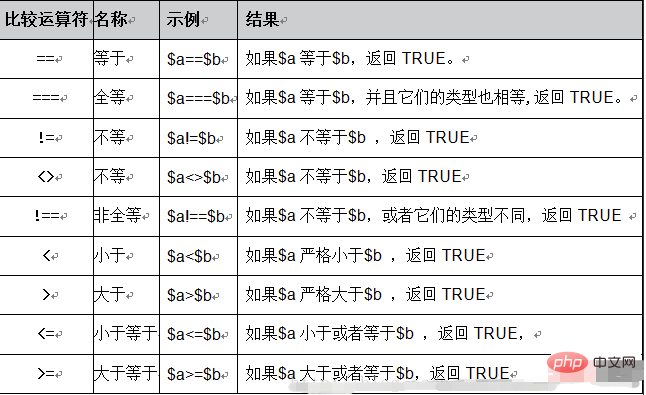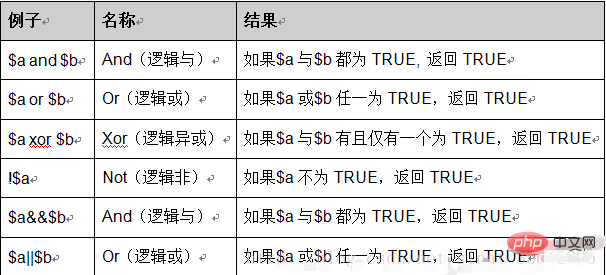

(1) Arithmetic operator

<?php
$maxLine = 4; //每排人数
$no = 17;//学生编号
$line = ceil($no/$maxLine); // 向上取整
$row = $no%$maxLine ? $no%$maxLine : $maxLine;
echo "编号<b>".$no."</b>的座位在第<b>".$line."</b>排第<b>".$row."</b>个位置";?>(2) Assignment operator
<?php
$a = "我在慕课网学习PHP!";
$b = $a; $c = &$a;
$a = "我天天在慕课网学习PHP!";
echo $b."<br />";
// 我在慕课网学习PHP!
echo $c."<br />";
// 我天天在慕课网学习PHP!
?>(3) Comparison operator

<?php
$a = 1; $b = "1";
var_dump($a == $b); // true
var_dump($a === $b); // false
var_dump($a != $b); //false
var_dump($a <> $b); // false
var_dump($a !== $b); // true
var_dump($a < $b); //false
$c = 5;
var_dump($a < $c); //true
var_dump($a > $c); // false
var_dump($a <= $c); // true
var_dump($a >= $c); // false
var_dump($a >= $b); // true?>(4) Ternary operator
<?php
$a = 78;//成绩
$b = $a >= 60 ? "及格": "不及格";
echo $b;?>(5) Logical operator

(6) String linker
<?php
$a = "张先生"; $tip = $a.",欢迎您在慕课网学习PHP!";
$b = "东边日出西边雨";
$b .= ",道是无晴却有晴";
$c = "东边日出西边雨";
$c = $c.",道是无晴却有晴";
echo $tip."<br />";
echo $b."<br />";
echo $c."<br />";
?>(7) Error control operator
<?php
$conn = @mysql_connect("localhost","username","password");
echo "出错了,错误原因是:".$php_errormsg;
?>Thank you for reading, I hope you will benefit a lot.
This article is reproduced from: https://blog.csdn.net/sinat_35615296/article/details/78813100
Recommended tutorial: "php tutorial"
The above is the detailed content of Take you two minutes to understand the operators in PHP. For more information, please follow other related articles on the PHP Chinese website!